[Editor’s Note: The Mad Scientist Laboratory is pleased to feature guest blogger Steve Pomper with his winning essay submission from our Fall / Winter Writing Contest. His Back to the Future themed piece uses the U.S. Army’s pre-war Louisiana Maneuvers to envision a concept that converges synthetic training architectures, simulations, and live training and test instrumentation and sensors with the power of artificial intelligence. The OASIS concept integrates Soldiers and units across multiple echelons and spans the continent to test, evaluate, and train future capabilities to scale in support of Multi-Dimension Operations. In initiating the Louisiana Maneuvers to ready the Army for the coming conflict in Europe, GEN George C. Marshall, Chief of Staff, Army, succinctly stipulated, “I want the mistake [made] down in Louisiana, not over in Europe, and the only way to do this thing is to try it out, and if it doesn’t work, find out what we need to make it work.” Similarly, Mr. Pomper’s OASIS concept would enable and facilitate a North American Proving Ground to do just that for 21st Century Army Modernization — Read on!]
…in 1941, the Army did something extreme: it tested its doctrine. Not on tabletop war-games, not in a computer simulation… No, the Army mobilized over 400,000 Regular and National Guard troops, spent a year training them up, and then let them fight each other across 30,000 square miles of Louisiana and Texas…1
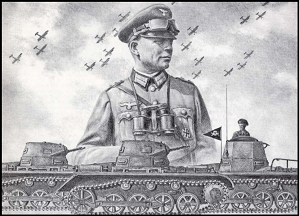
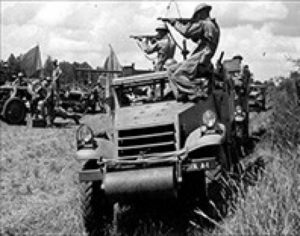
This seems an implausible undertaking today, but by 1941 that Army realized the dominance of German tank and ground-attack aircraft. Add to this a doctrine espousing blitzkrieg, and the European map was changed – not to mention Japan’s rout of the Pacific. The Louisiana Maneuvers, and those in the Carolinas, tested not only new doctrine and untried leaders, but the equipment needed to blunt German counter-offensives. The tank destroyer, half-tracks, anti-tank weapons, and even the C-ration were some of the notable items tested and adopted. The whole notion was bold, but needed, as the result clearly saved many lives. The Army was learning because it had to. The maneuvers’ coordinator, General “Whitey” McNair summarized this well, “…we had to get together something of an army pretty darn fast.”2
Decisive victory in WWII meant combining air, land, and sea operations to achieve strategic goals. Yes, that Army knew all about deception, spying, insurgents, and radio intercepts, but the early impact was fringe (albeit growing throughout the war). Today, the domains of conflict are many times those of 1941 and growing.3 If you can name a domain, some military or actor is planning to use it for combative reasons. 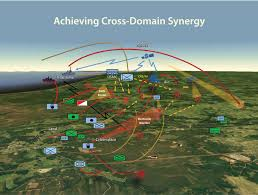 Across all of these domains new forms of attack and defense are already being tested today. The singular effect in one domain is multiplied by others, and so on. Although the nature of conflict might not have changed, the tools to wage it have become extraordinarily vicious. The idea of a ‘knock-out blow’ is real.
Across all of these domains new forms of attack and defense are already being tested today. The singular effect in one domain is multiplied by others, and so on. Although the nature of conflict might not have changed, the tools to wage it have become extraordinarily vicious. The idea of a ‘knock-out blow’ is real.
The Army has not stopped learning, but it lacks an expansive proving ground that allows the exponential impact of weapons, sensors, and Soldiers to be measured. This idea is that “the whole is greater than the sum of its parts.”4 Is this true of the Army’s newest, and yet to be conceived equipment and doctrine? There is a strong chance it is, yet this remains conjecture without quantifiable testing on a large scale. We ‘know our enemy,’ but do we ‘know ourselves?’
To its credits, the Army’s Defender and Project Convergence (PC) experiments are knocking on this door, but their scale and scope are not broad enough. The goal of expanding PC’s scale is worthy, but will not realize the needed zeitgeist. The results are tactical, and although excellent to know, they cannot help inform strategic decision makers in detail: Should a leader invest in 10 of this if they know it does that; or buy two of this, four of these and just one of those for the same that – for less? The newish “Exportable CTC” is another readiness good idea, but overall it’s really just a cost saver.
A solution for this gap comes from a concept called the Operational Assessment & Systems Integration Scenario, or OASIS. The underpinning of the concept is similar to 1941 – it is threat-based; meaning, we do not need an invisible giant killer until we are certain we have to fight giants. Industry, academia and organizations like DARPA have the resources and curiosity to care about outliers.
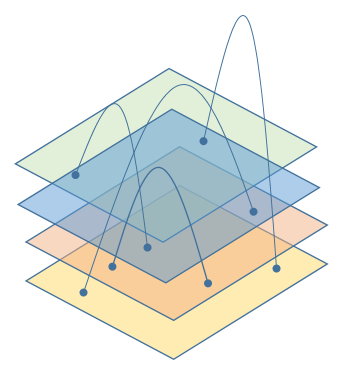 The concept envisages multiple layers of capabilities, acquisition, test, experiments, evaluation, training, and exercises – simultaneously. The physical locations for activity are widely dispersed to ensure the terrain is suitable, and the means to record the events are available. Simply put, OASIS puts ‘large-scale’ back into preparations for large scale combat operations. The immense size, scale, and scope of OASIS creates its own protection against eavesdropping adversaries as well.
The concept envisages multiple layers of capabilities, acquisition, test, experiments, evaluation, training, and exercises – simultaneously. The physical locations for activity are widely dispersed to ensure the terrain is suitable, and the means to record the events are available. Simply put, OASIS puts ‘large-scale’ back into preparations for large scale combat operations. The immense size, scale, and scope of OASIS creates its own protection against eavesdropping adversaries as well.
Imagine then, in the same moment, a division headquarters is trying to control three brigades, albeit under a cyber-attack. The brigades are many hundreds of miles apart, but OASIS has them together, with ‘two-up and one back’ as 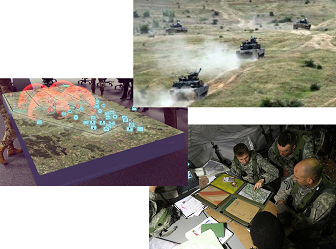 they penetrate an enemy security zone and then clash with deliberate defenses. The enemy is part real, part autonomous, and with a good amount of artificial effects (bombers in Louisiana dropped sacks of sand and flour!). An action in one place is cloned in another by the closest possible replication. Commanders passing through friendly lines talk and virtually meet to rehearse the complex maneuver – as do their subordinates.
they penetrate an enemy security zone and then clash with deliberate defenses. The enemy is part real, part autonomous, and with a good amount of artificial effects (bombers in Louisiana dropped sacks of sand and flour!). An action in one place is cloned in another by the closest possible replication. Commanders passing through friendly lines talk and virtually meet to rehearse the complex maneuver – as do their subordinates.
In an unknown-location, a successful special operations raid disables threat air defense command and control. This allows deep rotor-aviation  reconnaissance to move past the defenses. The new sensors blast back rocket launcher locations to long-range fire batteries, as strategic intelligence assets are repurposed to another theater. Even a Stryker company completes its company-lanes on this day, while the lessons learned were the importance of pre-combat checks and PMCS. ENDEX.
reconnaissance to move past the defenses. The new sensors blast back rocket launcher locations to long-range fire batteries, as strategic intelligence assets are repurposed to another theater. Even a Stryker company completes its company-lanes on this day, while the lessons learned were the importance of pre-combat checks and PMCS. ENDEX.
The results of OASIS are not simply doctrinal. The cyber-attack was mitigated by real and thinking friendly forces – assisted by attached Space Force Guardians. Navy Seals tested a new ultra low signature radio, while the 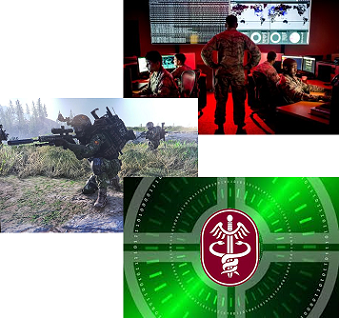 artillery ordnance used landed 2KM short (a new problem to solve). As OASIS unfolds, the teraflops of data gathered are not for future analysis, but near-real time, and aided by purpose-built AI. The next Systems Integration Scenario was already altering their plans as the sun went down. Medical Command’s casualty algorithm was also being modified, and an order for new radios was on its way to the decision authority.
artillery ordnance used landed 2KM short (a new problem to solve). As OASIS unfolds, the teraflops of data gathered are not for future analysis, but near-real time, and aided by purpose-built AI. The next Systems Integration Scenario was already altering their plans as the sun went down. Medical Command’s casualty algorithm was also being modified, and an order for new radios was on its way to the decision authority.
What OASIS envisions is not practical today, but that does not negate the need for it, or something like it. From capability requirement or imagined, equipment takes a long sequential journey into Soldiers hands. This is not new, but not right either. The processes used by force and project managers, test and evaluation analysts, and others are not bad; they are simply outdated, compared to what they could be. The improvements to these processes throughout the years have been excellent, but their ability to change significantly more has culminated. This is not only an Army problem, since OASIS includes Joint, coalition, academia, and industry programmed into its layers.
The concept also needs to merge required testing, evaluating, and training under one roof. The most obvious reason is cost savings. And the more 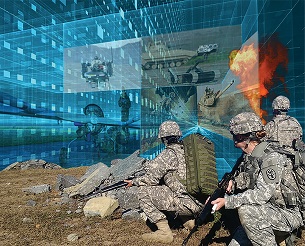 training venues afforded Soldiers and leaders, the readier they become. No commander would say ‘no’ to more and modern options. This relationship adds to the exponential nature of OASIS; test and evaluation data is richer under battle conditions, and can benefit from the un-scripted actions of Soldiers (doing what Soldiers do). Soldiers grow by training in realistic conditions, fighting a credible and thinking enemy, and with the newest equipment.
training venues afforded Soldiers and leaders, the readier they become. No commander would say ‘no’ to more and modern options. This relationship adds to the exponential nature of OASIS; test and evaluation data is richer under battle conditions, and can benefit from the un-scripted actions of Soldiers (doing what Soldiers do). Soldiers grow by training in realistic conditions, fighting a credible and thinking enemy, and with the newest equipment.
Another outcome of achieving OASIS is the achievement itself. The complexity, challenges, layers, data, and space would need several Desert Storms of planning and coordination. In a way, making OASIS work is like achieving convergence before the shooting starts.
OASIS is a concept, but not one that is too good to be true. Yes, it’s difficult today and something to aspire toward. There are obstacles to overcome and they include authorities; in particular to, electronic spectrum use, autonomous freedom, and airspace coordination to name a few. The instruments and bandwidth to realize OASIS are not mature, nor are the threats and targets a reality. Range safety will need a new  level of coordination, while instrumentation and data collection requirements must be greatly enhanced. An add-on difficulty would be interoperability across the Services and with coalition partners, to say the least.
level of coordination, while instrumentation and data collection requirements must be greatly enhanced. An add-on difficulty would be interoperability across the Services and with coalition partners, to say the least.
The overall scenario control from planning to execution would include NORTHCOM, FORSCOM, AFC, and ATEC, as well as other Service equivalents.  One example would be the need for long-range and undisturbed air corridors to link the remote site. The challenges to present experiments will help inform future solutions for OASIS, but the need to move in this direction is something the Army has to do. Like the Louisiana Maneuvers, OASIS will need to interrupt civilian and business activities to some degree.
One example would be the need for long-range and undisturbed air corridors to link the remote site. The challenges to present experiments will help inform future solutions for OASIS, but the need to move in this direction is something the Army has to do. Like the Louisiana Maneuvers, OASIS will need to interrupt civilian and business activities to some degree.
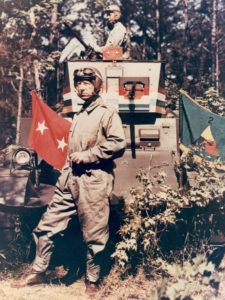
MG George S. Patton, Commanding General, 2nd Armored Division, during the Louisiana Maneuvers, joked, “I am unaware of the existence of any rules in war.”5 It is therefore time for the Army to do something ‘extreme’ again, but it will need help. An OASIS, or the like, will assuredly discover the combination of effects that ensure decisive victory. The first step is gaining buy-in from other Services, or a one team approach toward the Joint future battlefield. The next is allocating the resources to make this concept a reality. Alternatively, the National Military Strategy could expose the concept, and Congress could muster legislation mandating OASIS-like endeavors. A large scale, all-domain proving ground is not something nice to have; it is a historical reality, which needs a modern maneuver space and approach.
If you liked this post, check out the following related content:
Simulating War: Three Enduring Lessons from the Louisiana Maneuvers, by Jennifer McArdle, published by our colleagues at War on the Rocks
A New American Way of Training, with Jennifer McArdle and associated podcast
From Legos to Modular Simulation Architectures: Enabling the Power of Future (War) Play, by Jennifer McArdle and Caitlin Dohrman
Mission Engineering and Prototype Warfare: Operationalizing Technology Faster to Stay Ahead of the Threat, by The Strategic Cohort at the U.S. Army Tank Automotive Research, Development, and Engineering Center (TARDEC)
Fight Club Prepares Lt Col Maddie Novák for Cross-Dimension Manoeuvre, by LTC(P) Arnel David, U.S. Army, and Major Aaron Moore, British Army, along with their interview in The Convergence: UK Fight Club – Gaming the Future Army and associated podcast
The Synthetic Training Environment, presented by then MG Maria Gervais, Director, STE Cross Functional Team (CFT) / Deputy  Commanding General, Combined Arms Center-Training (DCG, CAC-T), from the Mad Scientist Installations of the Future Conference, co-sponsored by the Office of the Assistant Secretary of the Army for Installations, Energy and Environment (OASA (IE&E)) and the Georgia Tech Research Institute (GTRI) on 19-20 June 2018 in Atlanta, Georgia, and see her associated slide deck
Commanding General, Combined Arms Center-Training (DCG, CAC-T), from the Mad Scientist Installations of the Future Conference, co-sponsored by the Office of the Assistant Secretary of the Army for Installations, Energy and Environment (OASA (IE&E)) and the Georgia Tech Research Institute (GTRI) on 19-20 June 2018 in Atlanta, Georgia, and see her associated slide deck
The STE discussion in the Top Ten Takeaways from the Installations of the Future Conference
The Metaverse: Blurring Reality and Digital Lives with Cathy Hackl and associated podcast
Gamers Building the Future Force and associated podcast
About the Author: Steve Pomper is a retired Cavalryman and now a Department of the Army Civilian at the U.S. Army Test and Evaluation Command (ATEC), Aberdeen Proving Ground, MD. He holds a doctorate in business from the University of South Florida.
Disclaimer: The views expressed in this blog post do not necessarily reflect those of the Department of Defense, Department of the Army, Army Futures Command (AFC), or Training and Doctrine Command (TRADOC).
1 https://angrystaffofficer.com/2016/04/01/its-time-for-another-louisiana-maneuvers/
2 https://www.historynet.com/louisiana-maneuvers-1940-41.htm
3 Air, land, sea, space, cyber, electromagnetic, information, political, psychological, societal, religious, atmospheric, et al.
4 https://philosiblog.com/2016/03/17/the-whole-is-more-than-the-sum-of-its-parts/
5 https://www.nationalww2museum.org/war/articles/louisiana-maneuvers — There is a very amusing story behind why Patton said this.



